Let’s go back to New York Comic Con 2019.
If you’ve ever been to NYCC, you know the fast-paced hustle and bustle of enthusiastic fans and exhibitors. You’ve powered through the intense waves of people to visit your favorite booths (looking at you, PugliePug!). You’ve also experienced those lively cosplayers who are decked out to the nines, crowds swarming to get the perfect photo.
Alright, I’ll admit it. I’m one of those people. Here I am with Captain Jack Sparrow:


Sometimes, there’s a jaw-dropping costume that stops you dead in your tracks because it’s just that cool. That’s how I’ve come to know and love the fantastic Ryan Jude Novelline.
I left the cozy, safe-haven that is the Wacom booth to explore and document the vast world of the Javits Center. And as the crowd pushed like a current, I glanced to my left and locked eyes with The Good Fairy:
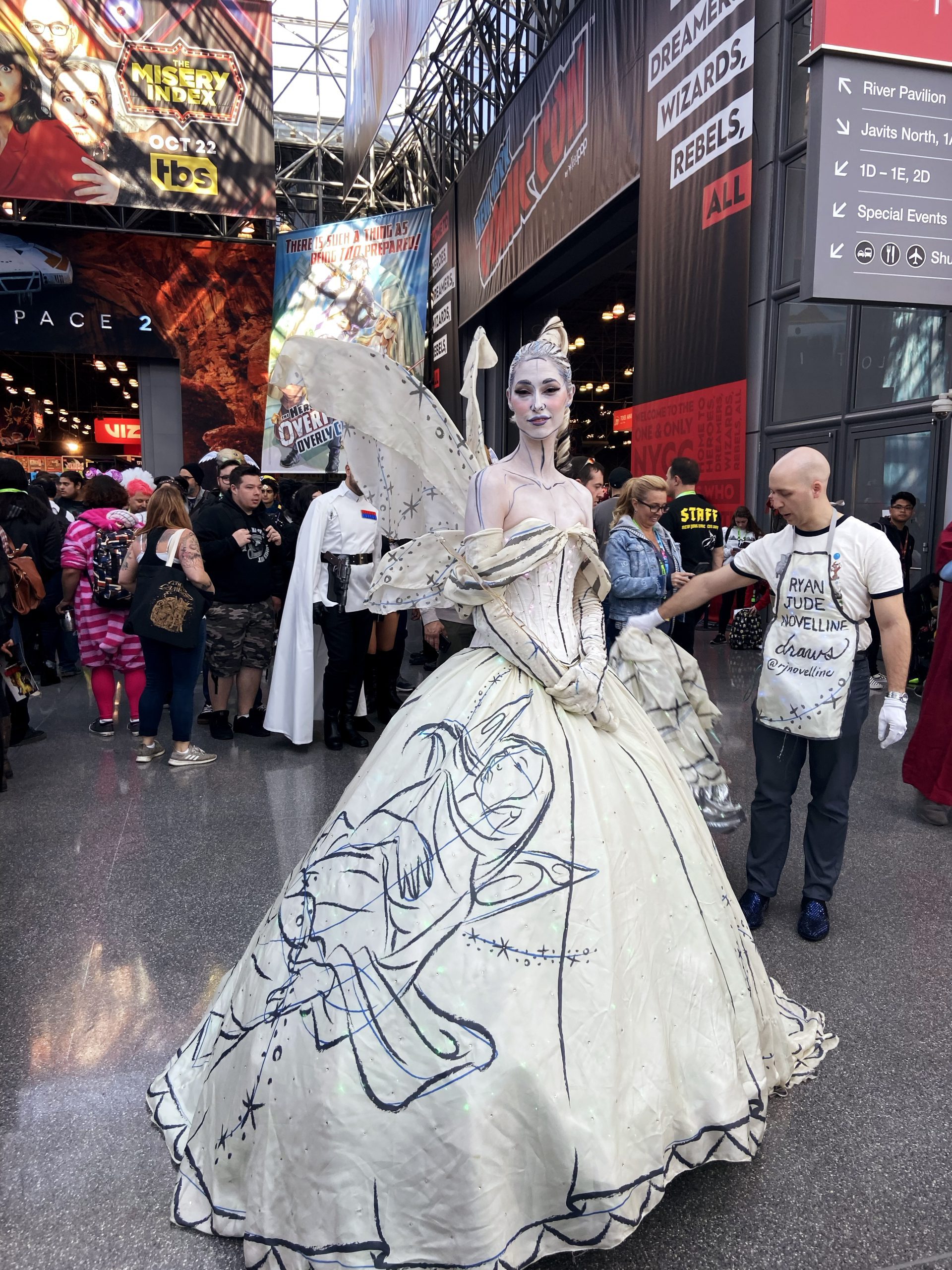

She was stunning. “The custom-printed silk gown features original illustrations that appear as charcoal pencil drawn over paper. The monochromatic fairies illuminate in a resplendent palette from 2,000 color-changing LED lights. The gown has a 14 ft cathedral train and is still as light as a phoenix feather” (via Ryan Jude Novelline).
I noticed Ryan’s apron featuring his IG handle and immediately tagged and shared this image on Wacom’s IG stories. Ryan and I began to chat via DM where I learned he used a Wacom tablet to create the digital drawing for the gown.
I recently had the opportunity to interview Ryan to learn more about his magic and creativity. For a behind-the-scenes look at Ryan’s studio, click here.
What path or interests led you to become a designer? Did you always want to design intricate gowns?
I sort of fell into fashion design. As a child, I wanted to be a Disney animator and work in movies. I passed my childhood poring over storybooks with colorful illustrations and copying fairytale characters onto printer paper. But I was also always very tactile. I loved the supple texture of silk and rose petals. I loved the fabric costume on my Butterfly Princess Barbie. When I look back at the toys I played with as a child, I’m not surprised by the fanciful and fantastical themes in my work today.
While studying illustration at RISD, I designed a custom cardigan for the Gap that was displayed and sold on 5th Ave in New York, and it exposed me to the world of commercial fashion design. Then I interned for Walt Disney Imagineering and explored the magic of theme parks. And before graduating, I fell in love with the work of Alexander McQueen after visiting the Savage Beauty exhibit at the Metropolitan Museum. More recently, I was production assistant for Greta Gerwig’s Little Women in the costume department under Jacqueline Durran. All of these pivotal experiences have strongly influenced the direction of my designs.
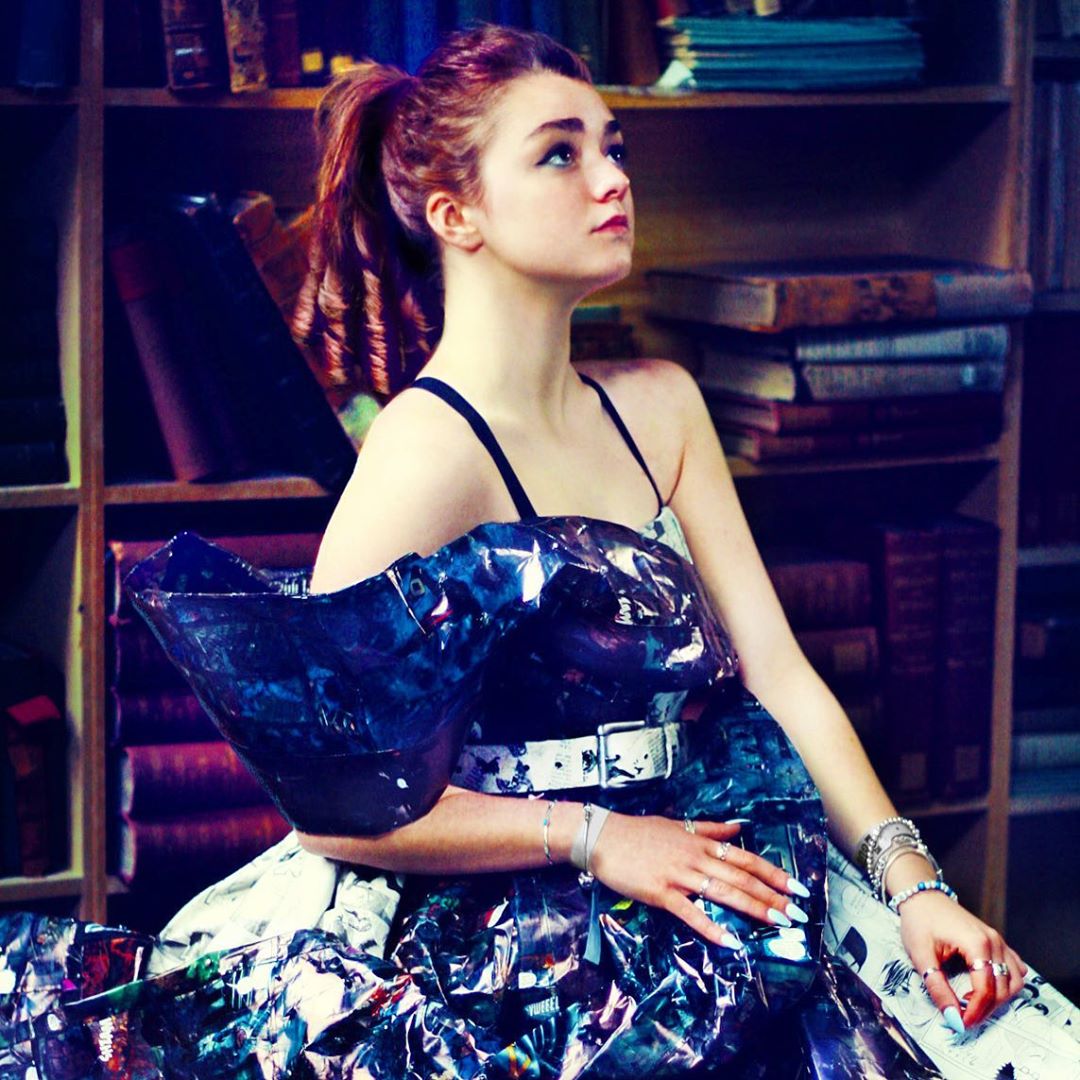

Maisie Williams of Game of Thrones in Ryan’s paper gown made of comic books.
What is your process like when planning for a new piece? Do you have a creative routine?
When I settle on an idea, I dive into myself. I will put on headphones playing sweeping music like Alexandre Desplat or ATB, let my mind wander, and pace around often in the dark. This ritual began in college and has lasted with me since. I think better when I am moving around and need to tune out the rest of the world while my own thoughts settle down. This is often only possible at night.
I will also think through the entire construction process in my head. There is no sketch nor mood board. My process involves many steps and switching mediums quickly. And it would take too long to document and illustrate everything, so I try to work out the whole project in my head. Then just sit down and do it. After weeks of construction on a single dress, even I’m surprised how it arrived there! And I try to let the dresses evolve as I work as if they were play-dough sculptures.
What is your most important artist tool? Is there something you can’t live without in your studio?
Light. Between the sunlight from the windows and the many crystal chandelier lamps, I rely heavily on the participating of light. Even in an age where so much of my work is digital, I still surround myself with as much light as possible.
My studio also has a handful of playful items that give me inspiration. There is a kaleidoscope, a golden vanity mirror, a blown-glass bluebird, a metal crown coated in crystals, and many other things. While I try to keep a minimal aesthetic, I still pick up these objects and rekindle memories that spark new ideas. They are enchanted to me. And I often post images of them on my Instagram.
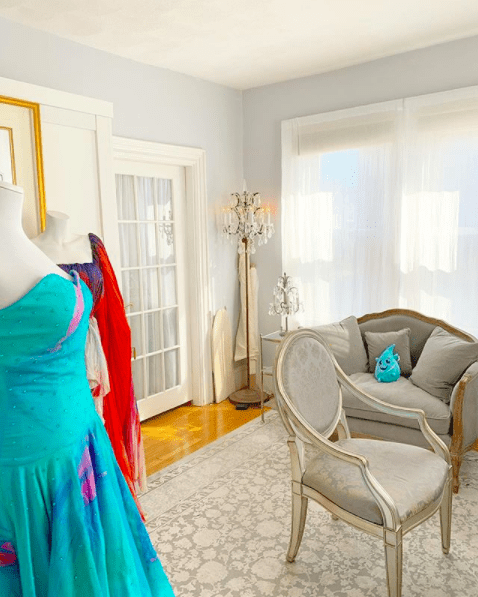

What is the most unlikely place you go for inspiration?
Perhaps the photos on my phone. Life moves quickly, and I am an avid documentarian of my own world. Within a year or so, my phone now has over 10,000 images and video on it, but I seldom take time to review them. Even scrolling past events in the photo archive, I stumble upon beautiful moments that remind to reflect on gratitude and refocus on personal goals. Last year, I brought one of my gowns up to the Great Wall of China, and reliving those moments through my phone’s photos transported me back to that moment of personal triumph.
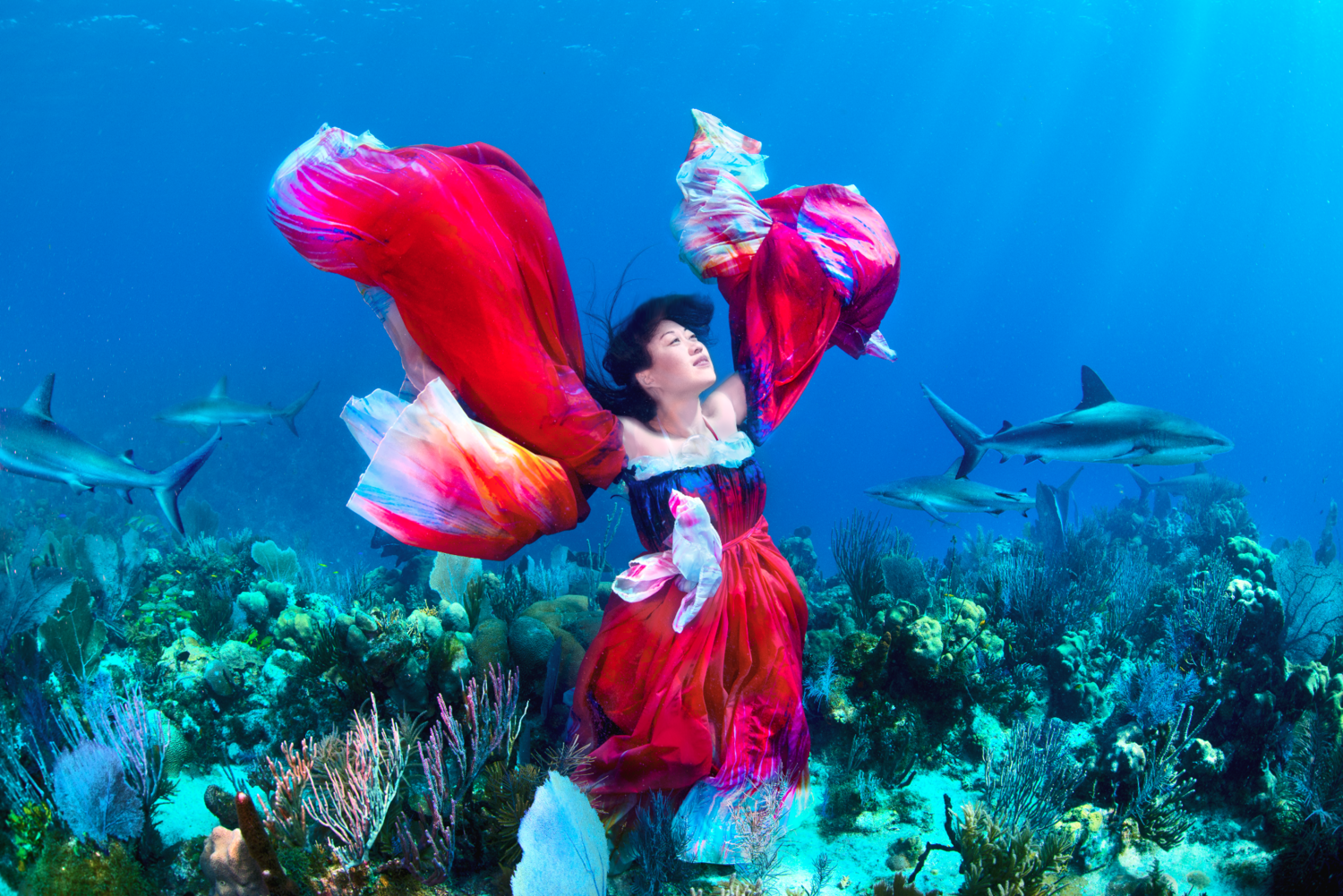

Who are your biggest creative influences?
My mother has always been my strongest creative supporter. I remember when I was a toddler, she used to buy these play-scarves of colorful China silk, and my brother and I would tie them together into costumes. And she would play with us as we imagined our own worlds. We used up those scarves until they were nothing but rags. She also used to sing and read stories to us at night. That all came full circle when my mom and I collaborated on her first children’s book, Piccadilly and the Fairy Polka.
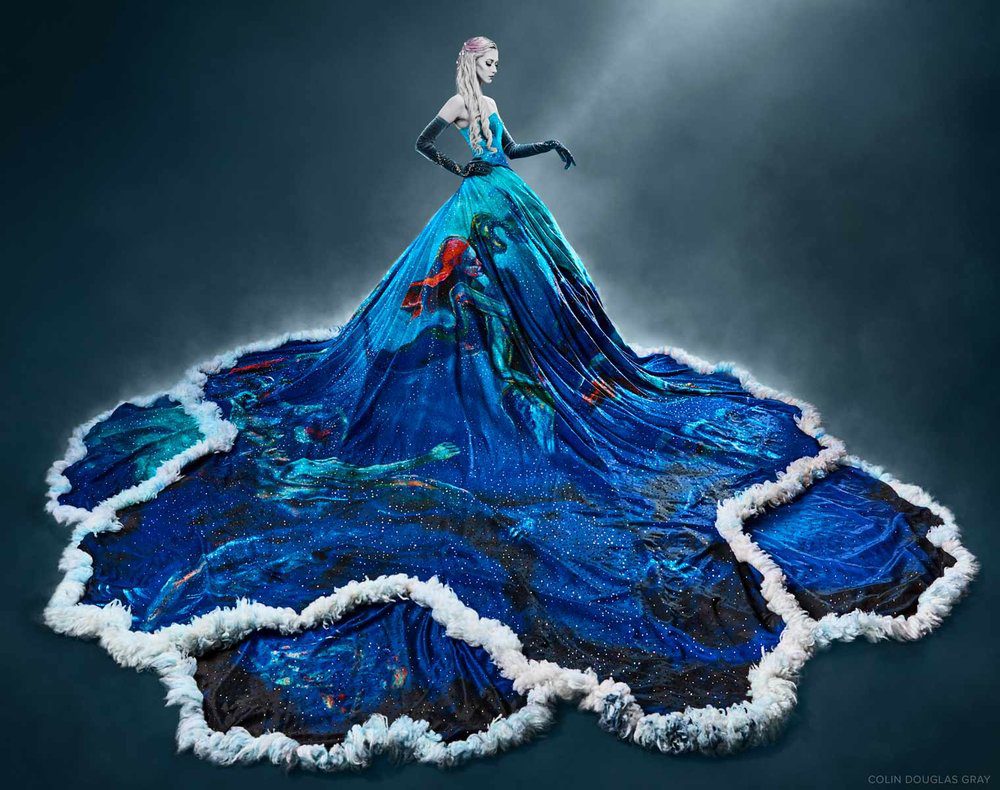

Other creative influences include illustrators Nadezhda Illarionova and Christian Birmingham, composer Alexandre Desplat, street artist Banksy, designer Alexander McQueen, film costumer Sandy Powell, painter Mary Blair, and automata-maker Thomas Kuntz.
Do commercialism and media trends have an impact on your work? Do you feel this is good or bad?
I do not really follow media trends for my own work. They come and go and cycle anyway. I try to remember who I am at the core and let the trends wash over me like waves. Sometimes you get swept into them too, but it isn’t something you can control.


The online, global market has pushed everyone to become more environmentally-conscious, which is becoming more of a standard than a trend. That has influenced me a lot. As concerned consumers organically discern sustainable practices against wasteful ones, I am trying to inspire others to see the beauty in reusing materials. It can be done.
What advice would you give to an aspiring designer?
In regard to designing, I would recommend starting out by working with entirely second-hand materials. If you can make a set of old, unwanted clothes beautiful, then you can you do anything with new fabric. Consider the long-term cost of your work to the planet. Polyester fibers will never fully decompose.
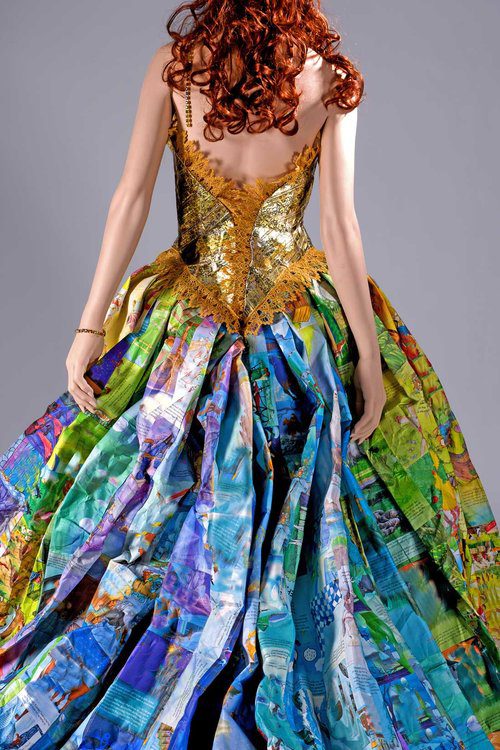

Creatively, I would suggest tapping into your own voice. Your interests and perspective are entirely unique. The deeper you dive into yourself, the more self-aware you will become, and originality will follow. And if you’re ever lost, I recommend investigating what made you excited as a child when you were less self-conscious. I think we fear appearing vulnerable in our art and lives, because of how others may judge us. Yet ironically, we form the deepest human connections through those moments of vulnerability. Risk-taking may be the key to exposing the uniqueness of you that allows others to understand you.
And when your work is impassioned and unique, others will likely copy you. Take it as a compliment, move on, and stay focused on you. Mimicking your aesthetics never gives someone an edge over your true, creative spirit. You will create something else.



